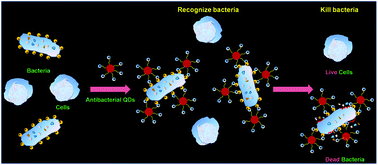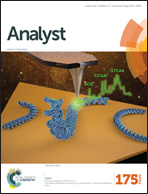Quantum dots modified with quaternized poly(dimethylaminoethyl methacrylate) for selective recognition and killing of bacteria over mammalian cells
Abstract
Copper-free click chemistry has been used to graft quaternized poly(dimethylaminoethyl methacrylate) (QPA) modified with azide to the quantum dots (QDs) derived with dibenzocyclooctynes (DBCO). The success of the quaternary ammonium polymer-modified QDs was confirmed by ultraviolet-visible spectrophotometry (UV-Vis), fluorescence spectroscopy, zeta (ζ) potential, size distribution, and transmission electron microscopy (TEM). The QPA-modified QDs exhibited properties of selective recognition and killing of bacteria. The novelty of this study lies in fact that the synthesis method of the antimicrobial QPA-modified QDs is simple. Moreover, from another standpoint, QPA-modified QDs simultaneously possess abilities of selective recognition and killing of bacteria over mammalian cells, which is very different from the currently designed multifunctional antimicrobial systems composed of complicated systematic compositions.


 Please wait while we load your content...
Please wait while we load your content...